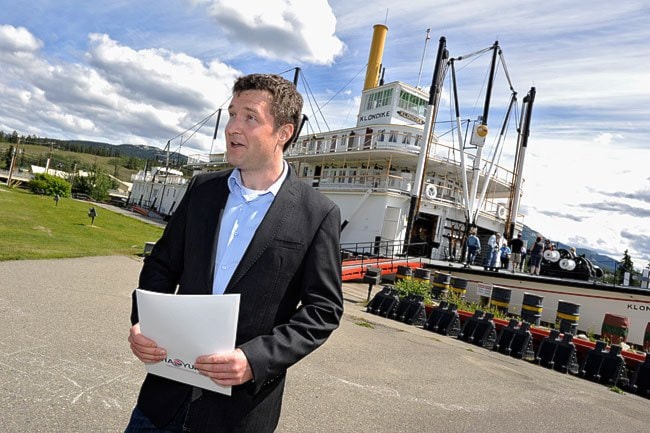A guided tour is no substitute for a sign, says Linda Rausch of Bellevue, Nebraska.
Rausch and her husband, Bob, stopped at the S.S. Klondike yesterday, during a stop in Whitehorse, while on their way to Alaska.
They hadn’t toured the national historic site, but Rausch said services are important. “[You] can’t read everything in a book,” she said.
But cuts to Parks Canada in the Yukon may mean more tourists must rely on books. This will be the last summer for guided tours of the sternwheeler and the Klondike’s Dredge Number 4, as Parks Canada sheds 30 of its 110 jobs in the territory.
Cutbacks will also end winter camping at Kathleen Lake and curtail search and rescue operations in Kluane National Park.
And cuts may hamper the work of archivists and the maintenance of historical artifacts, said Blake Rogers, executive director of the Tourism Industry Association of the Yukon.
The territory’s “story is going to be impacted if you don’t have all the facts,” he said.
The cuts come as a surprise, given previous spending decisions. In 2009, Parks Canada gave $1.25 million to repair and stabilize structural components of the dredge.
“Why was this money invested in the first place?” asked Rogers at a press conference Thursday afternoon.
Sylvia Buckhard of Claim 33 Gold Panning in Dawson City echoed his thoughts. Many visitors to Claim 33 tour the dredge before or after stopping there, and Buckhard highly recommends the site.
Visitors can’t get a sense of the dredge just by looking at it, she said. She’s “mystified” about why the government would stop funding two of the Yukon’s main tourism sites.
If the tours stop, she says the investment in the site will have “basically been a huge waste of money.” Buckhard isn’t sure how the cuts will impact her business, but is confident they will.
Many of the cuts won’t be felt until next summer. Rogers expressed concern about how the cuts will impact visitor safety and the Yukon’s economy in the long term. The territory’s three national parks and five national historical sites generated almost $6.9 million in direct revenue in 2009. In the same year, they contributed $10.2 million to the Yukon’s economy.
The cuts are especially concerning given forecasts of a 40 per cent downturn in mining exploration from last year, said Rogers.
He stressed the importance of tourism in diversifying the territory’s economy. Last year was a “banner year for mining,” he said. Since that won’t be true every year, year-round tourism provides a way to stabilize the economy, said Rogers.
The government’s response to these concerns has been slow. The tourism association sent a letter to MP Ryan Leef on May 14. On May 22 they met to discuss the cuts and were supposed to meet again on June 7. That meeting has not yet been rescheduled.
Contact Meagan Gillmore at
mgillmore@yukon-news.com
